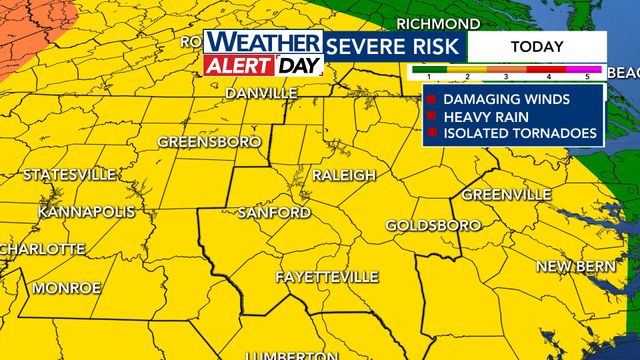Why this year has been so dangerous for Mount Everest's climbers
Everest has always been extremely dangerous, but its most fatal years on record have generally been related to a single disastrous event.
For example, an avalanche in 2014 killed at least 12 Sherpa guides, and a series of avalanches in 2015 sparked by that year's massive Nepal earthquake caused the deaths of at least 19 people.
This climbing season's 11 deaths so far, though, are not related to one event but to several factors that have caused overcrowding in the most dangerous areas of the route to the summit.
Mountaineers have suggested difficult weather conditions, a lack of experience and the growing commercialization of expeditions are contributing to the danger.
"I don't want to be so fatalistic and say it was only a matter of time, but when you have an unchecked area that is aggressively dangerous to be in ... you definitely end up with disaster, unfortunately," Les Stroud, host of the show "Survivorman," told CNN on Tuesday.
During the week beginning May 20, crowds of climbers became stuck in a queue to the summit, above the mountain's highest camp at 8,000 meters (26,247 feet). The summit of Mount Everest is 8,848 meters (29,029 feet) high.
Most people can only spend a matter of minutes at the summit without extra oxygen supplies, and the area where mountaineers have been delayed is known to many as the "death zone."
British climber Robin Haynes Fisher was one of those who had warned of the dangers of overcrowding.
"With a single route to the summit, delays caused by overcrowding could prove fatal so I am hopeful my decision to go for the 25th will mean fewer people. Unless of course everyone else plays the same waiting game," he wrote in a captioned Instagram post on May 19.
He died after suffering from what appeared to be altitude sickness at 8,600 meters (28,215 feet), while returning from the summit on Saturday.
Bad weather created limited window
The overcrowding issue was most evident in a May 22 photo that showed a lengthy line of climbers on an exposed ridge leading to the summit.
Alan Arnette, who has climbed Everest four times, explained that Nepal issued a record number of permits to foreigners this year. Because each of them requires a Sherpa guide, there are about 800 people trying to climb from the Nepalese side, he said.
In addition, bad weather made it so that there were only five days when people could climb toward the summit.
"So you have 800 people trying to squeeze through a very small window," Arnette explained.
Danduraj Ghimire, director general of Nepal's Tourism Department, said climbers ventured to the summit during that small window when the weather cleared up.
"On May 22, after several days of bad weather, there was a small window of clear weather, when more than 200 mountaineers ascended Everest," Ghimire said. "The main cause of deaths on Everest has been high altitude sickness, which is what happened with most of the climbers who lost their lives this season as well."
Nepal issued only a few more permits to climb Everest this year as it did in previous years, he said. A total of 381 permits were issued this year, just nine more than Nepal issued in 2017, he said.
Rizza Alee, an Indian mountaineer who returned from Everest's Camp Four because of a lack of oxygen, told Reuters about the "carnage" caused by the fatal traffic jam.
"It has become a death race there because there was (a) massive traffic jam, and people are pushing themselves who are not even capable of doing it," he said. "They do it, they try to summit and they, instead of summiting, they kill themselves."
'The major problem is inexperience'
Still, several mountaineering experts said this year's death toll was related to larger issues about less experienced mountaineers tackling the climb.
Mountain guide Adrian Ballinger told CNN that many see Everest as the "ultimate challenge." But the problem he has seen is the "lower level of experience of the climbers trying to come here and also of the companies that are trying to offer services on the mountain."
He continued, "That lack of experience, both with the commercial operators and the climbers themselves, is causing these images we see where people make bad decisions, get themselves in trouble up high and end up having unnecessary fatalities."
Ballinger explained that seasoned climbers call any part of the mountain above 26,000 feet "the death zone," adding that "humans just really aren't meant to exist there."
"Even when using bottled oxygen, supplemental oxygen, there's only a very few number of hours that we can actually survive up there before our bodies start to shut down. So that means if you get caught in a traffic jam above 26,000 feet ... the consequences can be really severe," he added.
Nepal does not currently require proof of climbing experience for those climbing Everest, but this is one thing the country is looking at changing, Ghimire told CNN.
Veteran climber David Morton spoke to CNN from base camp on the Tibetan side of Everest. He had just descended after getting around 100 meters from the summit for a research project.
"The major problem is inexperience, not only of the climbers that are on the mountain but also the operators supporting those climbers," he explained.
"Everest is primarily a very complicated logistical puzzle, and I think when you have a lot of inexperienced operators as well as inexperienced climbers along with, particularly, the Nepal government not putting some limitations on the numbers of people, you have a prime recipe for these sorts of situations happening."
Morton said he had gone up the mountain from the Tibetan side, where the government has put limitations on numbers.
"We were up just 100 meters below the summit on the 24th on a beautiful day, and there were maybe 30 or 40 people going to the summit from the Tibet side, the north side. It was a completely different dynamic," he continued.
For Morton, he thinks it's reached a point where the operators need to be certified to organize trips up the mountain.
"I think then those outfitters can be the ones that are responsible for vetting the clients that they're bringing on the mountain," he added.
More than 200 mountaineers have died on the peak since 1922, when the first climbers' deaths on Everest were recorded. The majority of bodies are believed to have remained buried under glaciers or snow.









